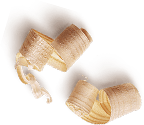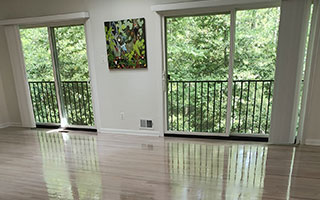

Hardwood Floor Refinishing Explained
Whether you own a home or run a business, one of your main concerns is how to maintain your property and protect it from damage. That's why you have homeowner's insurance, and that's also why hardwood floor refinishing is so important. Not only will hardwood floor refinishing make your floors look new again, but it will also protect them.
When To Refinish Your Floors
When your once shiny floors look dull and scratched, when the boards are broken, cracked, or gouged, or when stains or water marks mar the wood, wood floor refinishing can make all the difference. Hardwood Revival offers two levels of refinishing...
Buildup From Cleaning Products And Floor Wax
If your finish is sticky, cloudy, shows footprints, and attracts dirt, you may not need refinishing at all...
The Screen And Recoat Process
Screen and recoat involves roughing up the surface...
- Turn off the HVAC system...
- Sweep or vacuum the floor...
- Clean the floor with an appropriate wood floor cleaner...
- Use either a pole sander or buffer...
- Thoroughly sweep or vacuum again...
- Apply a line of finish along one wall...
- Using a t-bar with a coater...
- Exit the room, completing the finish behind you...
- If another layer is applied, repeat the process...
Sanding Floors
There are a number of reasons to sand away the finish completely...
- To remove deep scratches or gouges
- When patching to make seamless repairs
- To remove floor wax
- When finish is entirely worn off
- To address stains or damage
- To change color/stain of the wood
Sanding floors is better left to professionals...
If you are going to sand your own floors, it is important to pay attention...
- Practice proper safety: hearing and dust protection
- Change sandpaper as recommended
- Empty drum sander dust bags often
The Basis Steps In Sanding Are:
- Remove all furniture and furnishings...
- Sweep the floor carefully...
- Use drum sander with starting grit...
- Use edger for floor edges...
- Sweep or vacuum before progressing...
- Repeat sanding with finer grits...
- Buffer and screen entire floor for blending...
- Sweep/vacuum again before finish or stain...
Choose Wisely, Damages Are Hard To Fix
Whatever course of action you choose, remember damages are harder to fix than if done right initially... If you're not sure you can do it yourself, hire a professional wood floor refinishing company like Hardwood Revival.

